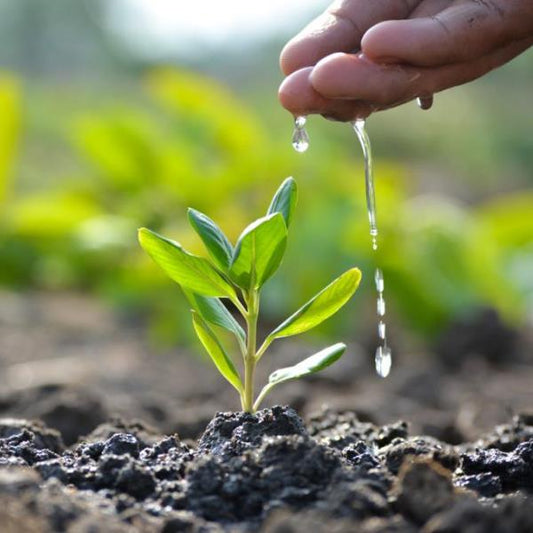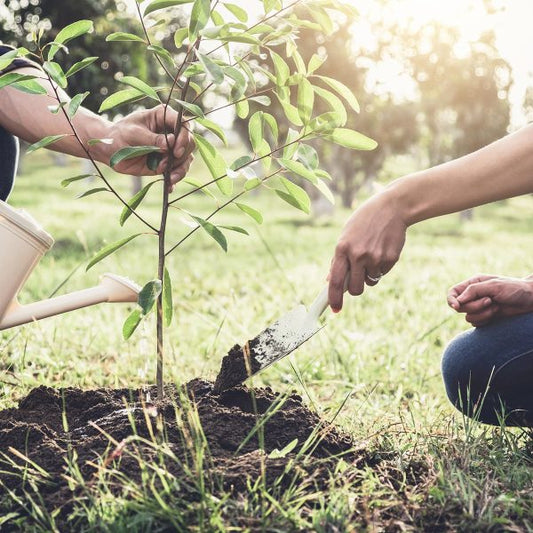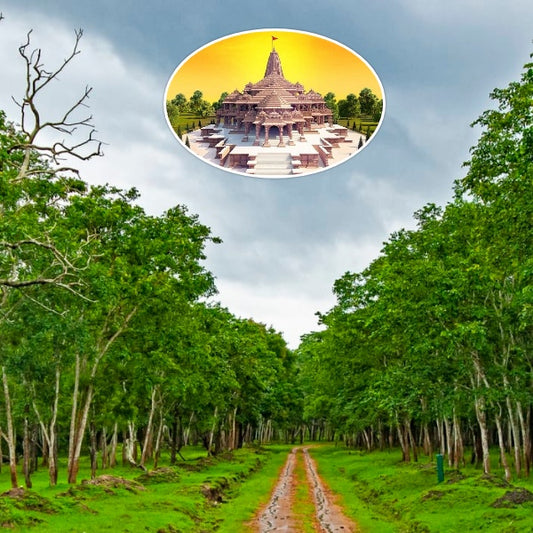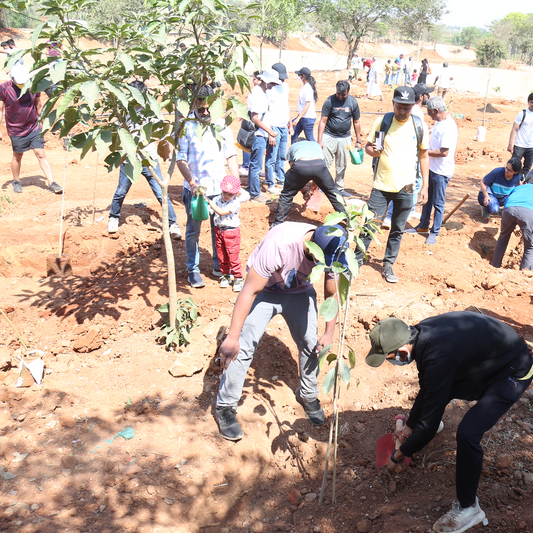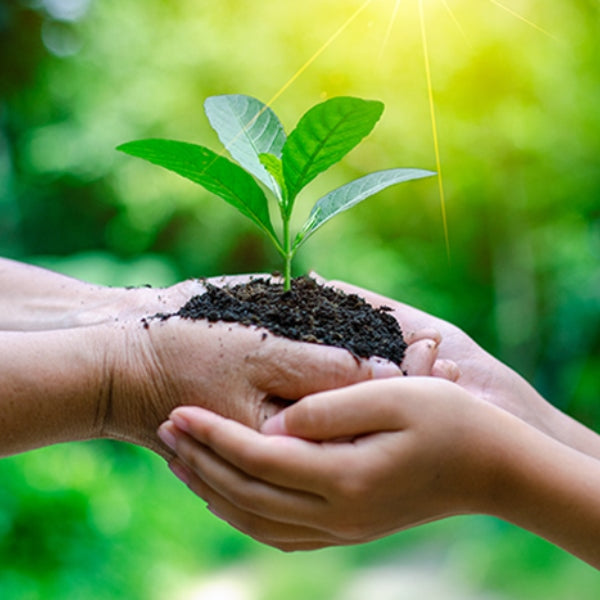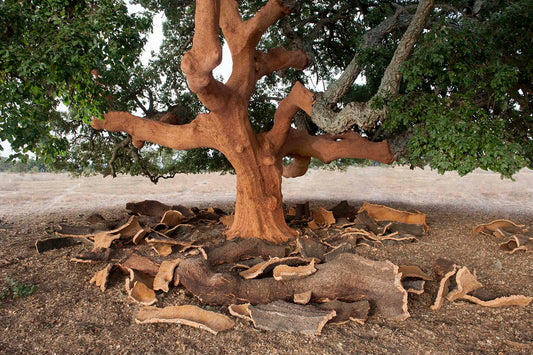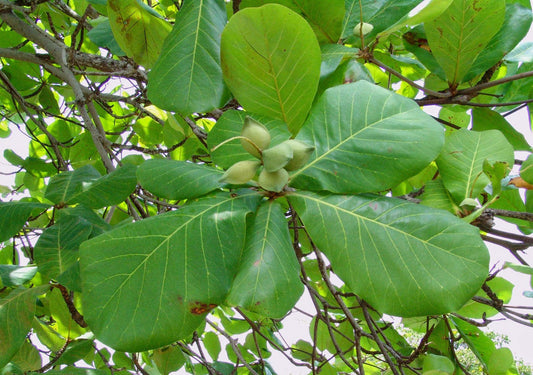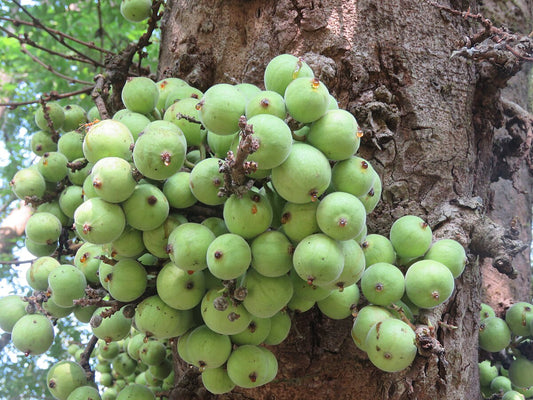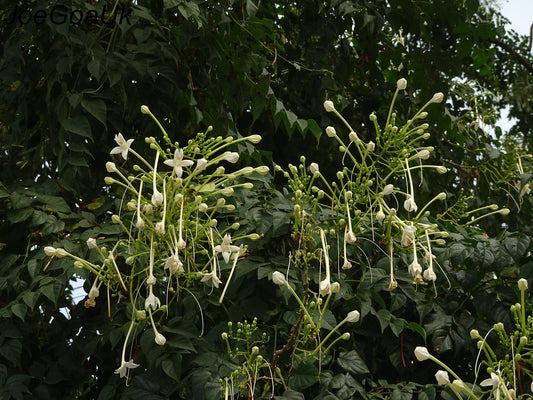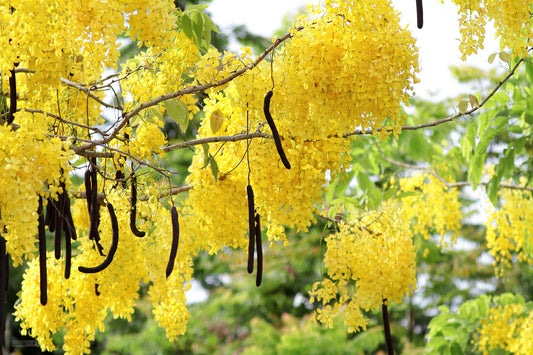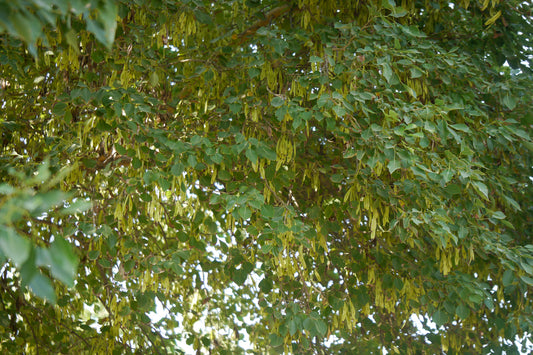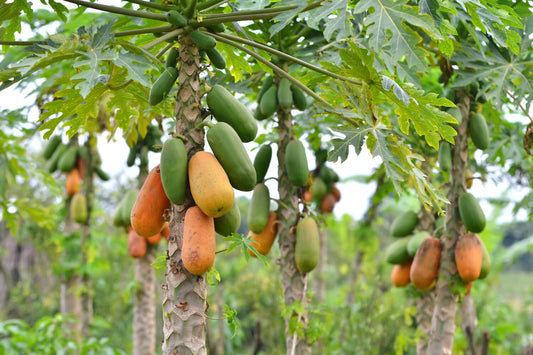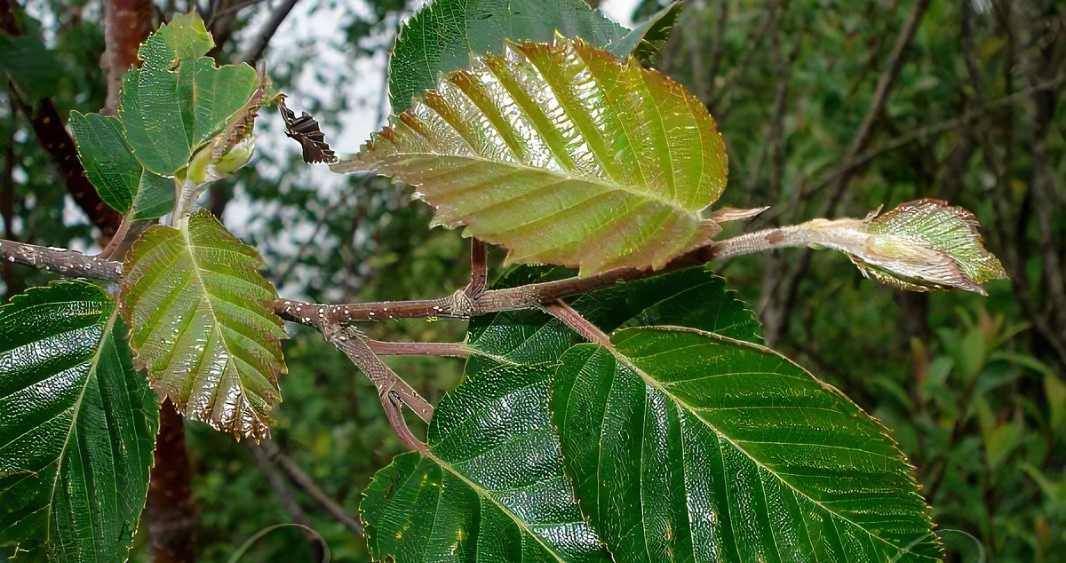

The Bhojpatra tree, scientifically known as Betula utilis, is a remarkable species revered for its historical significance, cultural importance, and ecological value. Found predominantly in the Himalayan region, this deciduous tree has been cherished for centuries for its versatile uses, Read more
Trending
Trees for Corporates
Bhojpatra Tree
You may also like
Corporate Plantations
Bhojpatra tree benefits
Explore the diverse benefits of the Bhojpatra tree, renowned for its historical significance, cultural importance, and medicinal properties. From its traditional use in ancient Indian scriptures to its therapeutic applications in Ayurveda, the Bhojpatra tree offers a wealth of spiritual, artistic, and healing virtues, making it a revered botanical treasure.
Bhojpatra tree (Betula utilis)
Delve into the botanical details and cultural significance of Betula utilis, commonly known as the Bhojpatra tree, revered for its distinctive white bark and paper-like leaves. As a deciduous tree native to the Himalayan region, Betula utilis holds a sacred place in Hindu mythology and Vedic rituals, where it is symbolically associated with knowledge, wisdom, and spiritual enlightenment.
Bhojpatra tree in Ayurveda
Uncover the therapeutic uses of the Bhojpatra tree in Ayurvedic medicine, where it is valued for its medicinal bark, leaves, and sap. In Ayurvedic texts, Bhojpatra is described as a potent herb with cooling, astringent, and detoxifying properties, used to treat various ailments, including skin disorders, respiratory conditions, and digestive issues, reflecting its versatile healing potential.
Bhojpatra tree uses
Discover the diverse applications of the Bhojpatra tree, from its bark and leaves used in traditional remedies to its bark utilized for writing scriptures, manuscripts, and artistic expressions. Rich in bioactive compounds such as betulin and betulinic acid, Bhojpatra bark exhibits anti-inflammatory, antimicrobial, and antiviral properties, while its smooth surface serves as an ideal medium for writing and painting, showcasing its cultural and practical significance.
Bhojpatra tree cultivation
Learn about the cultivation practices and environmental requirements essential for growing Bhojpatra trees, crucial for sustaining their population and preserving their cultural heritage. Bhojpatra trees thrive in cool, temperate climates with well-drained soil and adequate sunlight, requiring regular watering and pruning for optimal growth and bark production, highlighting the importance of adopting sustainable cultivation methods.
Bhojpatra tree conservation
Understand the importance of conserving Bhojpatra trees and the challenges faced in protecting their habitats and genetic diversity. Habitat loss, deforestation, and unsustainable harvesting practices pose significant threats to Bhojpatra tree populations, underscoring the need for conservation efforts and community-based initiatives to safeguard their cultural and ecological heritage.
Bhojpatra tree phytochemistry
Explore the chemical composition of Bhojpatra bark and leaves, which contain a variety of bioactive compounds known for their medicinal and therapeutic properties. From triterpenoids to flavonoids and polyphenols, Bhojpatra extracts exhibit antioxidant, anti-inflammatory, and analgesic effects, making them valuable ingredients in herbal medicine formulations and natural remedies.
Bhojpatra tree traditional knowledge
Delve into the traditional knowledge surrounding the Bhojpatra tree, passed down through generations in indigenous healing traditions, religious rituals, and artistic practices. Bhojpatra holds a sacred place in Hindu culture and mythology, symbolizing purity, wisdom, and divine knowledge, while its medicinal virtues continue to be revered in Ayurvedic medicine and folk remedies.
Bhojpatra tree habitat
Explore the natural habitats favored by Bhojpatra trees, typically found in the subalpine and alpine regions of the Himalayas, where they thrive in cool, mountainous environments with well-drained soil and ample moisture. Bhojpatra trees play a vital role in stabilizing mountain slopes, regulating water flow, and supporting biodiversity, contributing to the ecological resilience of their native ecosystems.
Bhojpatra tree sustainable practices
Examine sustainable approaches to managing Bhojpatra tree resources, emphasizing conservation, community engagement, and eco-friendly utilization methods. From promoting agroforestry and reforestation initiatives to implementing fair trade practices and value-added processing, sustainable strategies aim to balance cultural preservation with environmental stewardship, ensuring the long-term sustainability of Bhojpatra tree populations and their cultural significance.
FAQ
What is the Bhojpatra tree?
The Bhojpatra tree, scientifically known as Betula utilis or Himalayan Birch, is a deciduous tree native to the Himalayan region. It is renowned for its distinctive bark, which has been traditionally used for writing purposes and in various cultural practices.
What is the historical significance of the Bhojpatra tree?
The Bhojpatra tree holds significant historical and cultural importance in ancient Indian scriptures, where its bark was used as writing material for sacred texts, manuscripts, and inscriptions.
How is the bark of the Bhojpatra tree utilized?
The bark of the Bhojpatra tree is meticulously harvested, dried, and processed to create a smooth and durable writing surface. It has been historically used for manuscript writing, artwork, and religious scriptures.
Can the Bhojpatra tree bark be used for medicinal purposes?
Yes, the Bhojpatra tree bark possesses medicinal properties and has been utilized in traditional Ayurvedic medicine for treating various ailments such as skin disorders, respiratory conditions, and digestive issues.
Is the Bhojpatra tree endangered due to overharvesting?
The Bhojpatra tree faces threats of overharvesting due to its historical significance and commercial value. Sustainable harvesting practices and conservation efforts are essential to ensure its long-term survival.
What are the environmental benefits of the Bhojpatra tree?
The Bhojpatra tree contributes to environmental conservation by stabilizing soil, preventing erosion, and providing habitat and food for various wildlife species. Its cultivation supports biodiversity and ecosystem health.
Can the Bhojpatra tree be grown outside its native habitat?
While the Bhojpatra tree is primarily native to the Himalayan region, it can be cultivated in suitable temperate climates with well-drained soil and moderate rainfall. Its cultivation outside its native range requires careful consideration of environmental conditions.
What are the cultural uses of the Bhojpatra tree?
The Bhojpatra tree holds cultural significance in Hinduism, Buddhism, and other indigenous traditions. Its bark is used for writing sacred texts, prayers, mantras, and artistic expressions, symbolizing knowledge and wisdom.
Does the Bhojpatra tree have any spiritual significance?
Yes, the Bhojpatra tree is considered sacred in Hindu mythology and is associated with various deities and spiritual practices. Its bark is believed to possess divine properties and is used in rituals, ceremonies, and meditation.
How does the Bhojpatra tree contribute to sustainable forestry practices?
The Bhojpatra tree supports sustainable forestry practices through its non-timber forest products such as bark, which can be harvested without causing harm to the tree. Sustainable management ensures its continued availability for future generations.
Can the Bhojpatra tree bark be used for artistic purposes?
Yes, the smooth and durable surface of the Bhojpatra tree bark makes it suitable for artistic endeavors such as painting, calligraphy, and craftwork. Artists appreciate its texture and historical significance in their creations.
Are there any alternative uses for the Bhojpatra tree bark?
Apart from writing and medicinal purposes, the Bhojpatra tree bark can be used in making handicrafts, paper, and eco-friendly packaging materials. Its versatility makes it a valuable resource in various industries.
Does the Bhojpatra tree have any known adverse effects?
While the Bhojpatra tree bark is generally safe for use, individuals with sensitivities or allergies may experience skin irritation or allergic reactions upon contact. It is advisable to test for reactions before extensive use.
What are the traditional methods of harvesting Bhojpatra tree bark?
Traditionally, Bhojpatra tree bark is harvested by carefully peeling off thin layers from the trunk without causing damage to the tree. Sustainable harvesting practices ensure the tree's continued growth and vitality.
Can the Bhojpatra tree be propagated through seeds or cuttings?
Yes, the Bhojpatra tree can be propagated through seeds or cuttings. However, it requires specific environmental conditions, including cool temperatures and moist soil, for successful germination and growth.
How does the Bhojpatra tree contribute to soil health?
The Bhojpatra tree enhances soil health by enriching it with organic matter through leaf litter decomposition and root exudates. Its presence improves soil structure and fertility, benefiting surrounding vegetation.
What are the traditional medicinal preparations made from the Bhojpatra tree bark?
Traditional Ayurvedic preparations made from the Bhojpatra tree bark include decoctions, powders, and pastes used for treating skin ailments, respiratory disorders, and digestive issues. These formulations are valued for their therapeutic efficacy.
Are there any ongoing research studies on the Bhojpatra tree's medicinal properties?
Yes, ongoing research aims to explore the pharmacological properties of the Bhojpatra tree bark and its potential applications in modern medicine. Studies focus on its antimicrobial, anti-inflammatory, and antioxidant effects.
Can the Bhojpatra tree be integrated into agroforestry systems?
Yes, the Bhojpatra tree can be integrated into agroforestry systems to provide multiple benefits, including shade, erosion control, and supplementary income from non-timber forest products. Its cultivation contributes to sustainable land management practices.
Where can one find sustainably sourced Bhojpatra tree products?
Sustainably sourced Bhojpatra tree products, including bark sheets, extracts, and handicrafts, are available from reputable suppliers, fair trade organizations, and eco-conscious retailers. It is essential to prioritize products sourced through ethical and environmentally responsible practices.
Most Popular
Connect with us
-
👥 Corporates
If you are looking for:
- 🌲 Tree Plantation Events
- 📊 CSR Projects
📧 corporate@growbilliontrees.com
📞 +91 9699723523
💬 WhatsApp (Only): +91 9370599291
🕒 Mon - Sat | 10am - 7pm IST
-
🧩 Tree Plantation NGOs
If you are looking for:
- 💰 Financial Assistance
- 🤝 Operational Support
📧 support@growbilliontrees.com
📞 +91 9699723523
💬 WhatsApp (Only): +91 9370599291
🕒 Mon - Sat | 10am - 7pm IST
-
🌼 Individuals
If you are looking for:
- 👥 Group Tree Plantation Drive
- 🌳 Bulk Tree Plantation
📞 +91 9699723523
💬 WhatsApp (Only): +91 9370599291
🕒 Mon - Sat | 10am - 7pm IST



